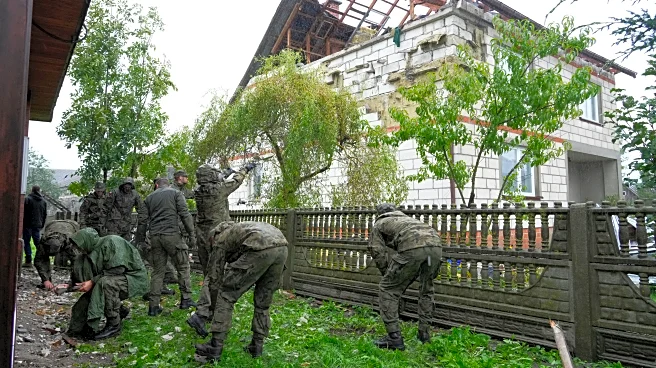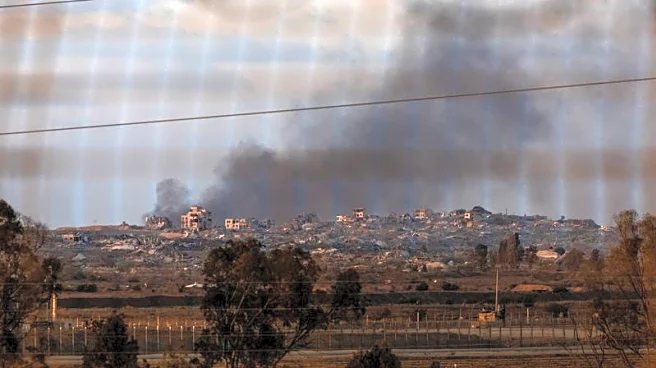What's Happening?
NATO's recent summit in The Hague introduced a defense-spending benchmark of 5% of GDP by 2035, divided into 3.5% for traditional defense and 1.5% for resilience spending. However, the lack of clear definitions
and oversight mechanisms for the 1.5% component has raised concerns about potential creative accounting by member states. This ambiguity could lead to countries re-labeling civilian programs as security-related, undermining the pledge's credibility. The framework aims to enhance military readiness through investments in critical infrastructure, cyber defense, and civil preparedness.
Why It's Important?
The ambiguity in NATO's spending pledge poses a risk to the alliance's cohesion and transparency in burden-sharing. Without clear guidelines, member states may exploit the resilience component to inflate their defense spending figures, potentially weakening collective defense efforts. The pledge's success is crucial for maintaining NATO's strategic balance and ensuring that investments genuinely enhance military capabilities. Addressing these challenges is vital for reinforcing allied solidarity and adapting to modern defense needs, particularly in the face of hybrid threats and infrastructure vulnerabilities.
What's Next?
NATO must establish a shared taxonomy for resilience spending, transparent reporting standards, and outcome-based metrics to ensure credible implementation of the pledge. The alliance should prepare for discussions at the 2026 NATO Summit in Turkey, focusing on turning the resilience component into a force multiplier for collective defense. Building a Joint NATO-EU coordination cell could prevent duplication and close operational gaps, enhancing collaboration and innovation. These steps are essential for transforming the political compromise into tangible capabilities that strengthen NATO's defense posture.
Beyond the Headlines
The debate over NATO's spending pledge highlights the strategic balance between military mass and societal resilience. Investing in resilience is not an alternative to hard power but an enabler, crucial for sustaining stability under pressure. The pledge's success depends on aligning resilience spending with defense plans and ensuring genuine dual-use enhancements. This approach could become one of NATO's most significant steps in decades, reinforcing its role in global security and adapting to evolving threats.













